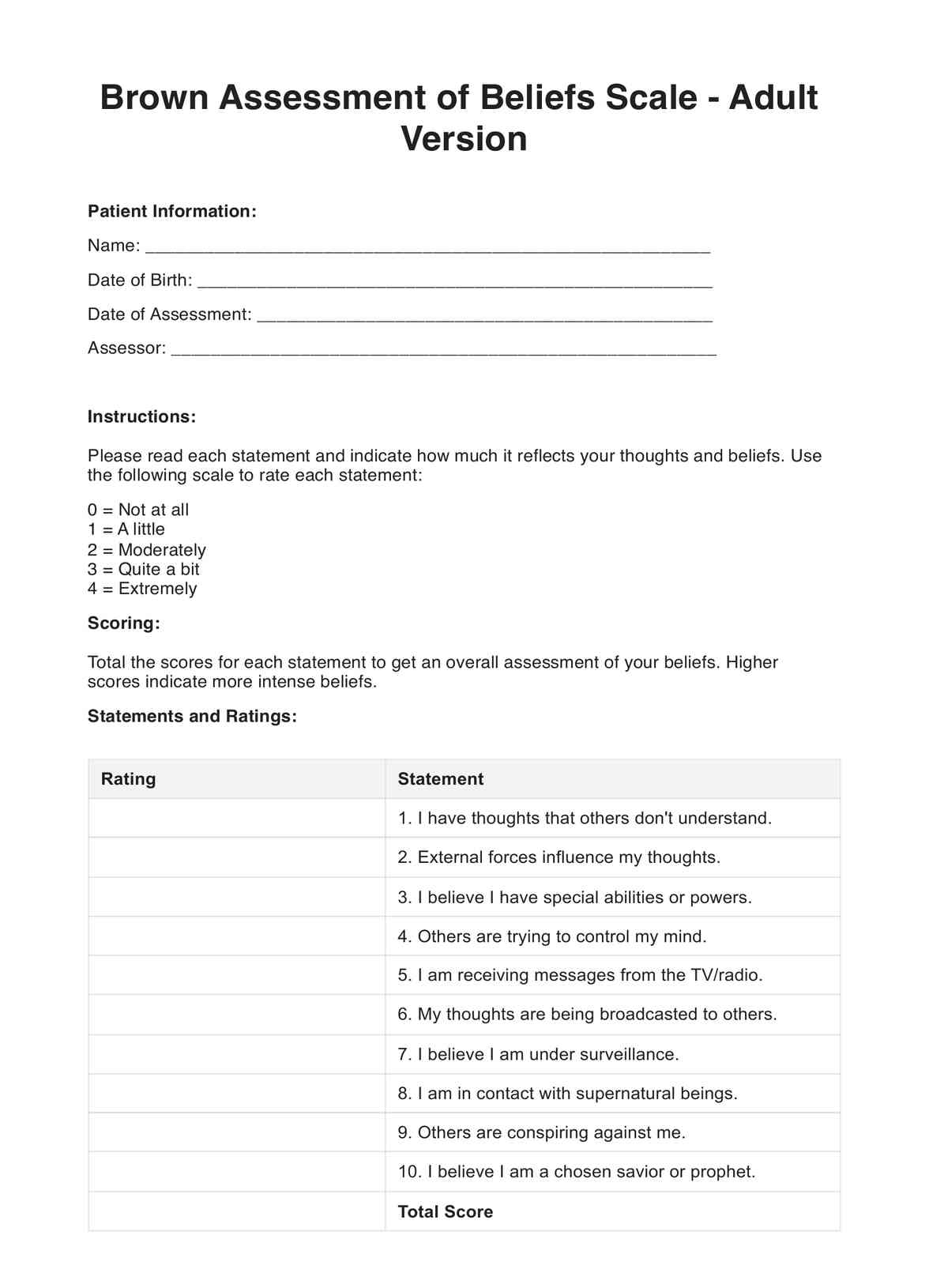The completion time varies, but it generally takes around 15-20 minutes to complete the scale.

Brown Assessment of Beliefs Scale - Adult Version
Assess delusional and nondelusional variants with the Brown Assessment of Beliefs Scale - Adult Version, the trusted tool for mental health professionals.
Use Template
Brown Assessment of Beliefs Scale - Adult Version Template
Commonly asked questions
Higher scores on the scale indicate more intense or severe delusional beliefs. Interpretation should be done by a trained professional considering the context and the individual's overall clinical picture.
The scale is used during diagnostic assessments, treatment planning, and progress monitoring for individuals with delusional beliefs, particularly in conditions like schizophrenia.
EHR and practice management software
Get started for free
*No credit card required
Free
$0/usd
Unlimited clients
Telehealth
1GB of storage
Client portal text
Automated billing and online payments











